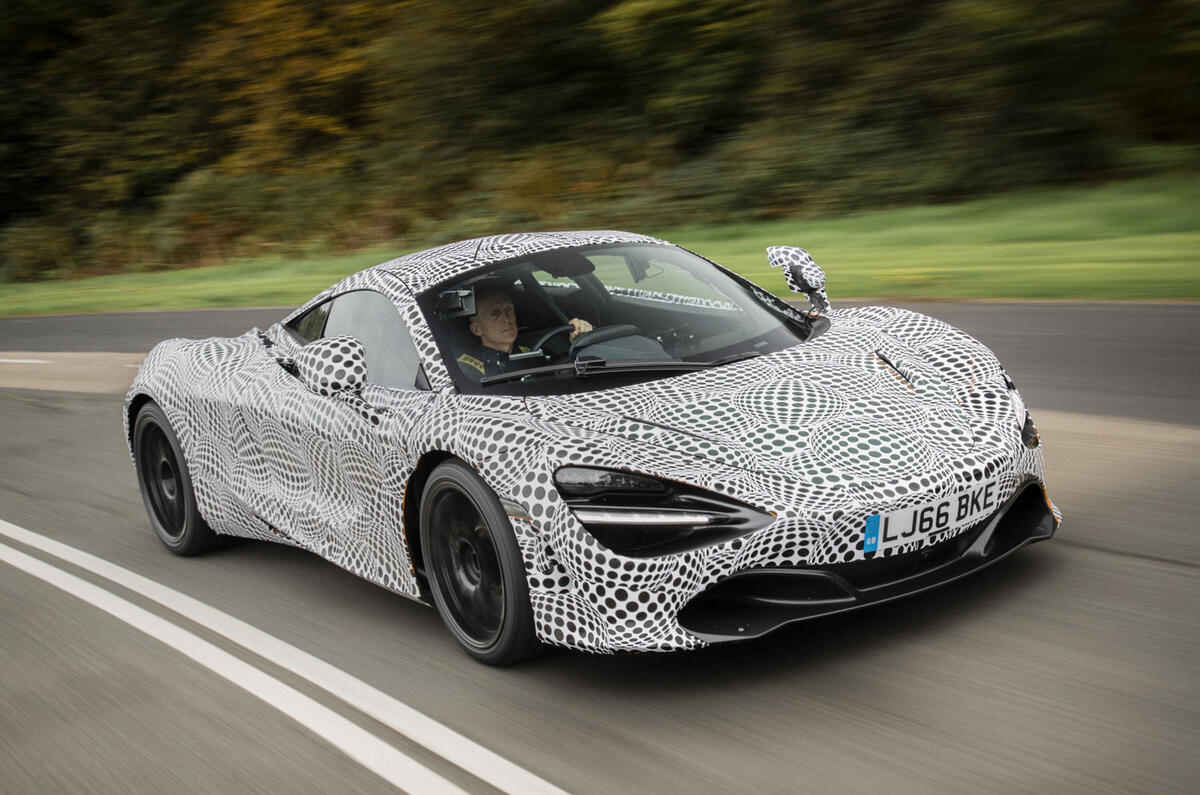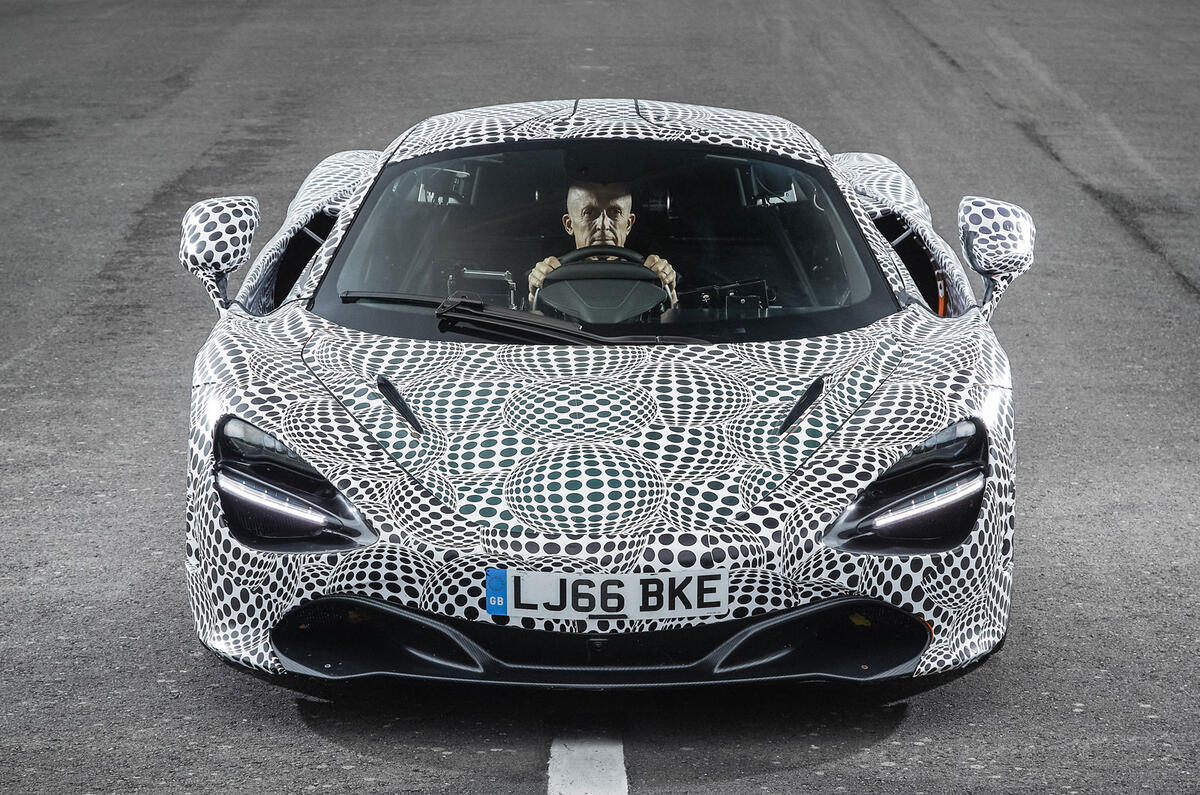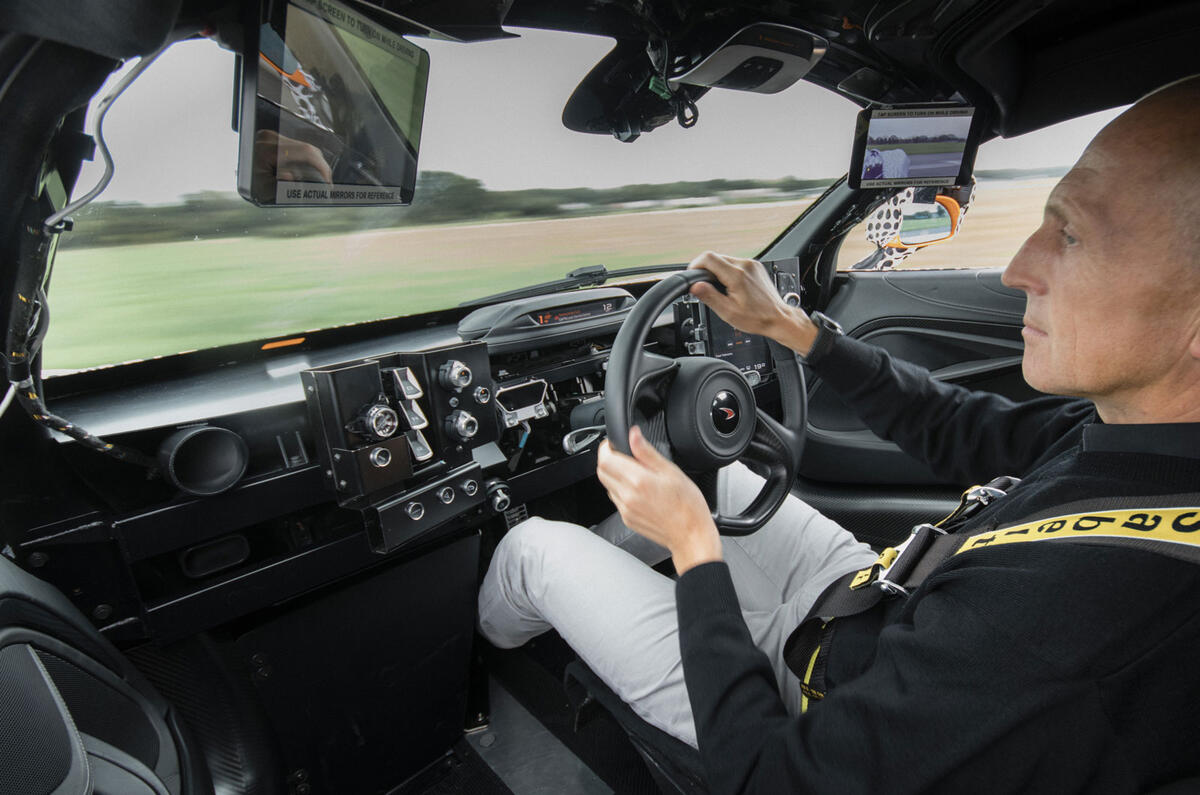This modified 720S is the development mule for McLaren’s three-seat BP23 (standing for bespoke project two, three-seater), its forthcoming Ultimate Series grand tourer.
Just 106 BP23s, which feature a central driving seat flanked by two passenger seats, will be built when the car goes on sale in 2019, but McLaren is keen to stress that although the BP23 will be, in an unspecified manner, “the fastest ever McLaren”, its focus won’t be on the track.
“It’s just faster – that’s all we’re saying at the minute,” said Andy Palmer, McLaren’s Ultimate Series line director. “The goal of this car is to give customers the ability to have
a high level of luxury, bespoke elements on the car, high performance, high speed – a very much road-focused grand tourer.”
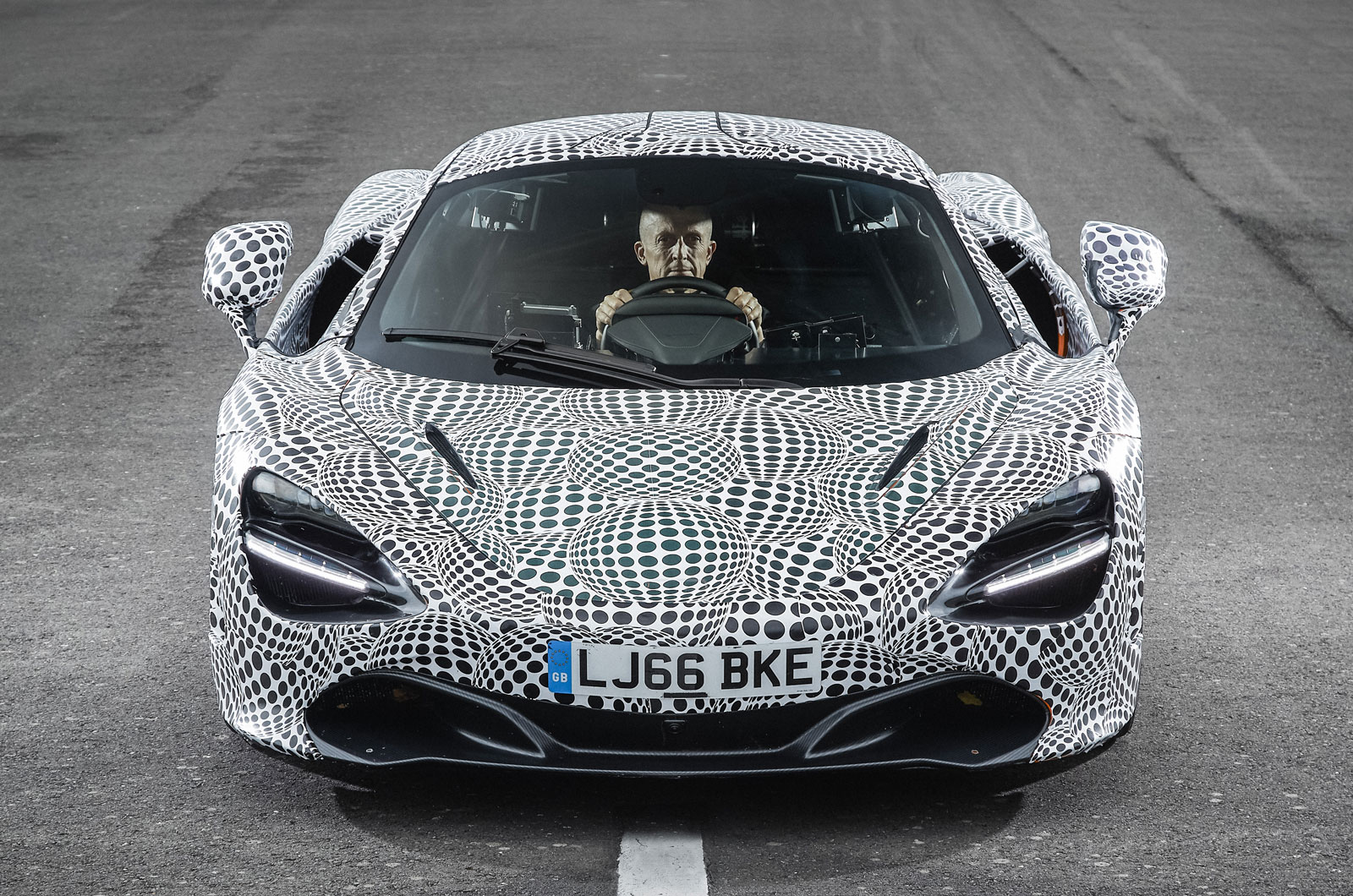
Although the BP23 is ‘bespoke project two’, Autocar understands that another member of McLaren’s Ultimate Series line-up, the P15 track-focused sports car, will arrive before the BP23.
The likelihood is that P15 is the third Ultimate Series car conceived but will beat the BP23 to market because of the three-seater’s complexity. BP23 will have a hybrid powertrain to augment the power of its twin-turbocharged V8 engine to vast levels, and it also needs significant changes to its carbonfibre passenger cell – which Palmer will only describe as “different” to the 720S’s – to comfortably accommodate three occupants.
“The centre seat is an amazing thing,” Palmer told Autocar. “The attraction is not only the driving position, but you can take two passengers and luggage on a long journey. I’ve been sitting in the back and it’s not a bad place to be.
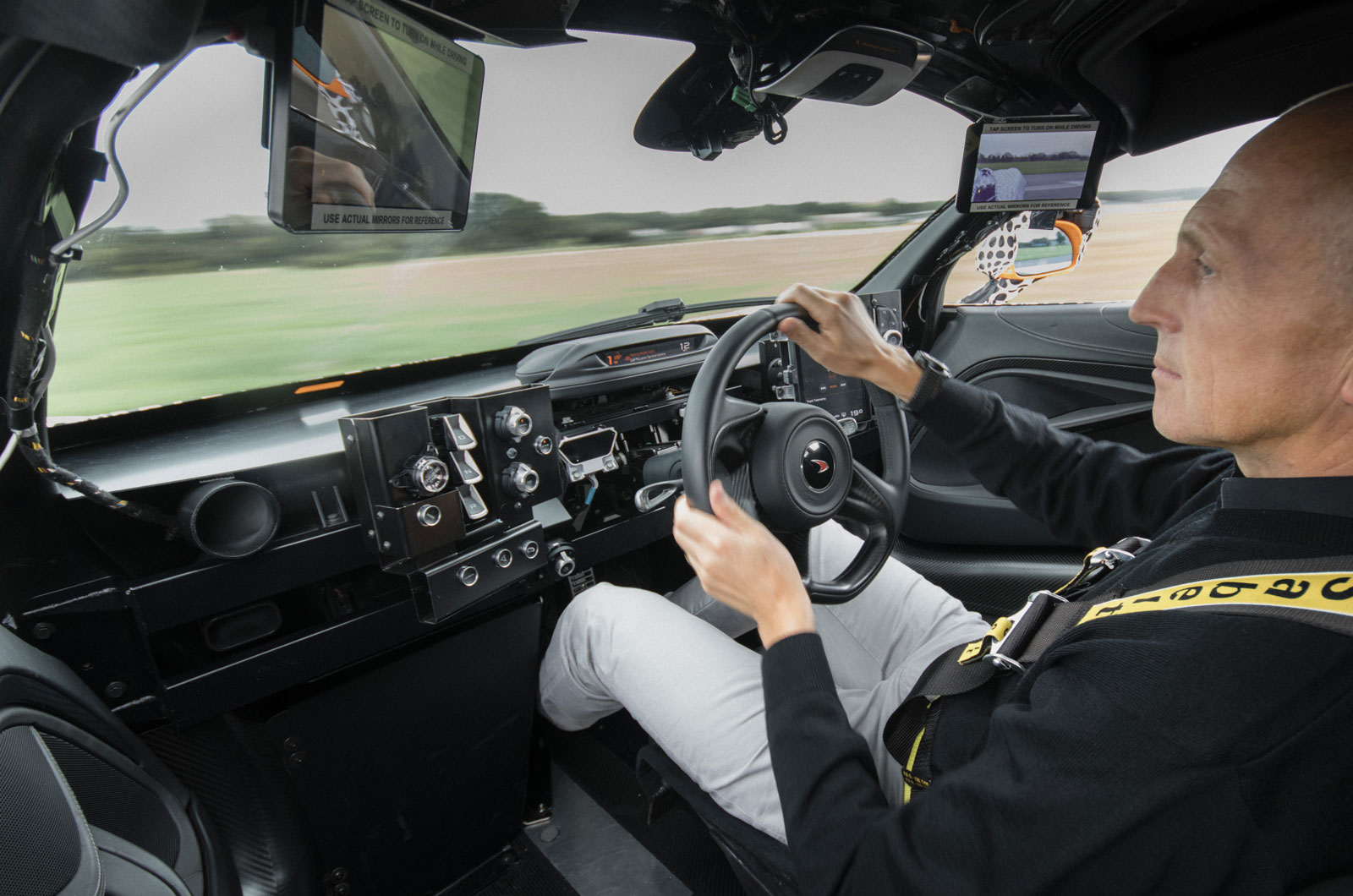
“Technology has moved on, particularly in carbon, and in our tub and in our monocell, and how we engineer that to accommodate three seats. It’s not without compromise, it’s not sitting in the back of a Mercedes S-Class, but nevertheless it’s not a huddled or tight space.” Palmer and his colleagues say that entry and egress to the BP23 is far easier than it was in the F1, too. Cameras might augment mirrors to increase visibility without compromising aerodynamics.
If lap times aren’t the way McLaren will measure the BP23’s performance (and they’re not), that leaves acceleration or top speed as the two measures by which the BP23 will be the fastest-ever McLaren. Palmer won’t be drawn on power outputs or even powertrain specifics, but beating the F1’s 240mph top speed or the P1’s acceleration figures (0-62mph in 2.8sec and 0-186mph in 16.5sec) would require an output beyond even the P1’s 903bhp. So expect a highly boosted development of the 720S’s 4.0-litre V8 engine, supplemented by a hybrid system whose primary mission will be to eliminate turbo lag.
The car is priced at around £2 million even before each one visits McLaren Special Operations for bespoke options. All 106 cars are accounted for.

